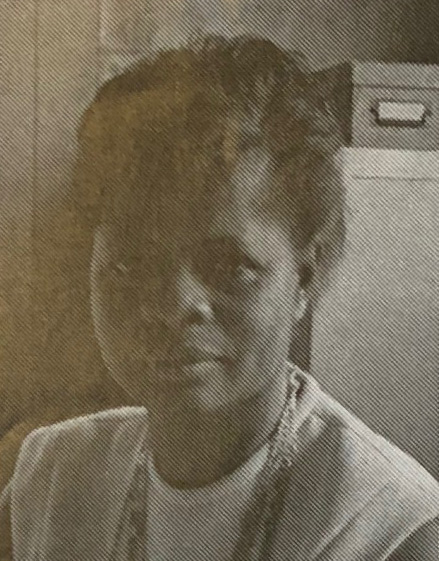Irene Sawyer
Irene Sawyer (b. 1929, d. 1988) was an artist, art historian, and educator, who played a key role in developing the field of African American art history. Like other Black women art historians and archivists of the 1970s and 1980s, Sawyer recognized the critical role that comprehensive archival databases of work by Black artists would have for future students and researchers of the field. She worked over the course of her career to create these archival databases, and to develop the exhibitions, texts, and educational resources that they made possible.
A Bay Area native, Sawyer earned her B.A. and M.A. in Art History from Mills College, focusing in these early studies on ancient Greek art. In the late 1960s—in part influenced by the ideas of the Black Power and Black Arts Movements—she shifted her focus to art created by Black American artists. Sawyer taught high school in the Oakland Unified school district from 1958 until 1966, while maintaining her own artistic practice, focused on oil and collage. In 1969, she became an assistant professor at San Francisco State University.

Irene Sawyer recognized the critical role that comprehensive archival databases of work by Black artists would have for future students and researchers of the field.
In 1970, she was tapped to co-direct, alongside Dr. Margaret Wilkerson, the University of California, Berkeley’s new Black Cultural Center, imagined as a campus and community hub for research, dialogue, and education in Black art and performance. Although the Center was short-lived, Sawyer remained affiliated with the University in a research capacity. From 1971-1976, she was the director and primary investigator for the Black Cultural Research Project. Supported by grants from the National Endowment for the Arts and the American Revolution Bicentennial Administration, the Black Cultural Research Project was dedicated to documenting and researching the work of Black artists and craftspeople in the United States, beginning in the 1700s and culminating in Sawyer’s own moment. From 1971-1974, Sawyer traveled across the country, visiting archives, meeting with curators and art educators, and interviewing artists. Although she worked under a rotating group of on-campus sponsors—almost entirely White, male scholars, like Folklore pioneer Alan Dundes, Anthropology professor William Bascom, and History professor Lawrence Levine—Sawyer herself was the project’s director and tireless advocate. By 1976, she had compiled a collection of slides that was at the time the most comprehensive visual archive of the work of Black American artists in existence at that time. The collection included some 4,300 unique slides, along with transcribed interviews with artists, artist biographies, and an annotated bibliography. It is still held in the archives of the Phoebe A. Hearst Museum of Anthropology at the University of California, Berkeley.

While working on the Black Cultural Research Project, Sawyer began doctoral studies in Art History at the University of California, Los Angeles. She worked with professor E. Maurice Bloch, writing a dissertation titled “The Afro-American Artist-Illustrator: A Cultural and Historical Survey, 1770-1950.”
Drawing on the breadth of knowledge granted by her work on the Black Cultural Research Project, Sawyer developed multiple art history courses, including a survey of African American art. She lectured at University of California, Berkeley, delivering probably its first course on African American art history, as well as at UC Davis, and later at Harvard. She was a W.E.B. Du Bois fellow at Harvard University from 1977-1979. She died in San Francisco in 1988.
This post was written by Claire Ittner, PhD Candidate in the History of Art Department at UC Berkeley, as part of research funded by the Andrew W. Mellon Foundation for Graduate Study in Curatorial Preparedness.
